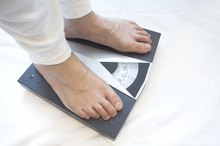What Is an Isocaloric Diet?
The isocaloric diet is a moderate-carbohydrate, moderate-fat diet that allows dieters to eat whatever they want as long as they consume the same amount of carbohydrates, proteins and fats daily. Promising quick weight loss with minimal muscle loss, the isocaloric diet is popular among bodybuilders 2.
How the Diet Works
Dieters eating a typical low-fat, calorie restrictive diet tend to lose muscle mass along with fat. This occurs because when not enough carbohydrates are consumed, the body has to go elsewhere, usually to the muscles, to find the amino acids it needs to function. In contrast, by reducing carbohydrates and increasing fat, the isocaloric diet allows dieters to lose weight while minimizing muscle loss. Like carbohydrates the body can convert dietary fat into energy. However, unlike carbohydrates, an increase in dietary fat promotes weight loss by decreasing insulin secretions. When insulin levels are high, the body does not readily burn stored fat.
While there are no restrictions as to what foods should be eaten on the isocaloric diet, healthy fats such as omega-3 fatty acids are always a better choice than saturated fats. (see references 1 & 2)
- Dieters eating a typical low-fat, calorie restrictive diet tend to lose muscle mass along with fat.
- When insulin levels are high, the body does not readily burn stored fat.
Calculations
Can Diabetics Eat Rye Bread & Pumpernickel Bread?
Learn More
The isocaloric diet is all about numbers 2. To calculate the amount of carbohydrates, proteins and fats required on the isocaloric diet, divide your daily caloric need by three. For example, if you eat 1,800 calories a day, 600 of these calories should come from carbohydrates, 600 from proteins and 600 from fats. One gram of fat contains nine calories, one gram of carbohydrate contains four calories and one gram of protein contains four calories. So in grams, 600 fat calories, 600 carbohydrate calories and 600 protein calories becomes 67 grams of fat, 150 grams of carbohydrate and 150 grams of protein.
- The isocaloric diet is all about numbers 2.
- To calculate the amount of carbohydrates, proteins and fats required on the isocaloric diet, divide your daily caloric need by three.
Side Effects
When starting the isocaloric diet, dieters might feel hungry, anxious and weak. However, these side effects should pass as the body adjusts to the lower carbohydrate intake. Remember to always consult a physician before starting any new diet.
Related Articles
References
Writer Bio
Ellen Ray has been writing professionally since 2004. Throughout her career she has written for a number of publications including the "Toronto Observer," "Alive" magazine and the lifestyle web portal, Scarlet Lounge. Ray holds a diploma in journalism from Centennial College.








